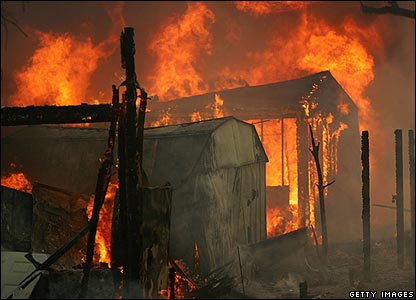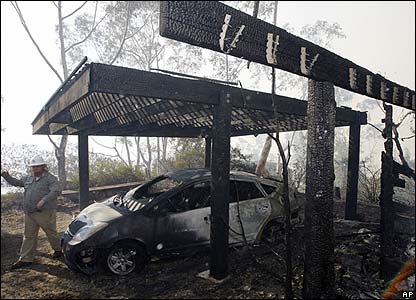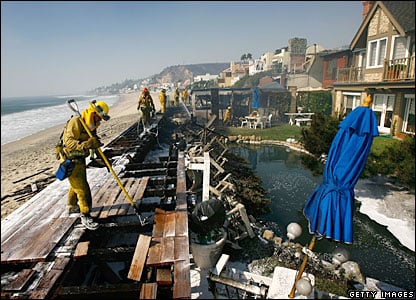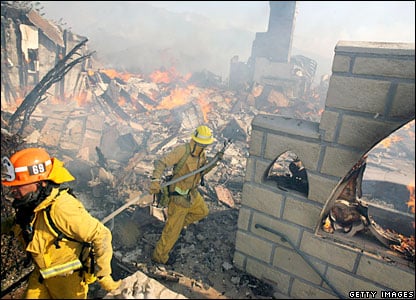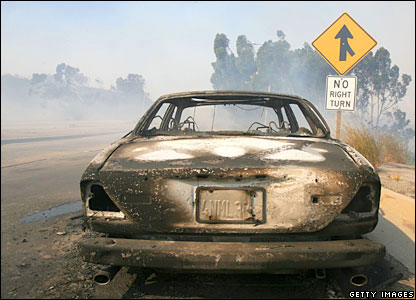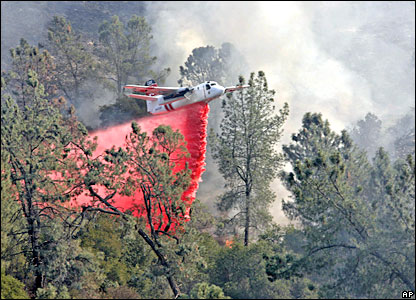Dua
JF-Expert Member
- Nov 14, 2006
- 3,229
- 662
Raging wildfires blaze toward coast.
A quarter million people in Southern California are trying to outrun flames that have turned hundreds of acres of homes and woodlands to ash. A local fire chief says she's out of trucks and personnel to beat back the deadly flames.
The San Diego Zoo's Wild Animal Park has been closed and animals are being moved. developing story
DEVELOPING STORY

A quarter million people in Southern California are trying to outrun flames that have turned hundreds of acres of homes and woodlands to ash. A local fire chief says she's out of trucks and personnel to beat back the deadly flames.
The San Diego Zoo's Wild Animal Park has been closed and animals are being moved. developing story
DEVELOPING STORY




